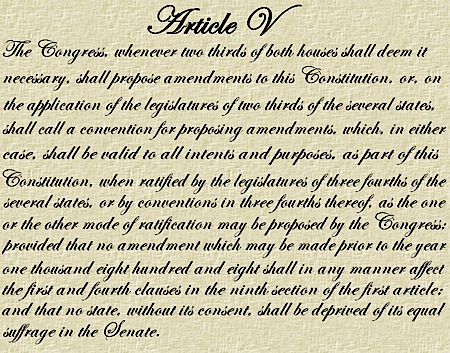The Evolution of Evolution’s Evolution
[Translations: Japanese]
The evolution of evolution? That sounds like a bad case of doubletalk. At first glance evolution’s evolution may seem oxymoronic (self contradictory), or tautological (needlessly repitetive). But on close inspection the evolution of evolution is no more oxymoronic or tautological than say the network of networks, which is what the internet is.
Surely there must be genes that control other genes, and software code that governs software. There must be a system of all systems, or a form which all forms adhere to, or some kind of control for controls, some way to organize all organizations. The structure of proofs must be provable, types of categories must fall into some kind of categories.
And there must be laws to change laws. One could think of the evolution of evolution as a type of meta-law. To illustrate the paradoxical, but astounding, power of meta-laws consider Article V of the US Constitution.

Whereever people live, they make rules. They make rules about who gets water first in their fields, or how to settle disputes about land boundaries, or how fast you can drive. Larger societies require another level of rules that govern the procedure for making rules. This higher level of law, a meta-law called a constitution, creates a framework for everyday laws by articulating the limits of law, by bringing consistence to multiple contradictory laws, and by providing the lawful authority that stands behind the laws. The Romans and Ahsoka in India first invented legal constitutions around 400 BC.
The good thing about a constitution is that it brings stability to laws. The bad thing about a constitution is that over time this enduring set of laws governs entire generations of people who did not ratify it. Circumstances change, and if the constitution does not change as well, its authority over newer generations diminishes. The solution to this problem is a constitutional amendment clause. When you craft a constitution you include a provision for changing the constitution.
The US Constitution has such a clause, Article V. Article V is a single short paragraph which provides the procedure by which the rest of the constitution can be changed, and also what parts can’t be changed. It requires three quarters of the states to ratify an amendment.
The evolvability of a constitution is a marvelous invention. The device of using a law to change itself was first invented by William Penn in 1682, inserted in his state’s first charter and later designed into Pennsylvania’s state constitution in 1776. The idea spread to other state constitutions and eventually was incorporated into the US Constitution in 1787.
The idea of a law that codifies how laws can be changed is a type of recursion. Its strange circularity is sharpened when you contemplate the prospect of amending the amendment clause. That would be a code that changes the code for making change to the code. You can immediately sense its paradoxical nature. Can the amendment clause declare itself immutable? Sort of like, you can change any rule you want except this rule? As soon as you try to grasp that kind of logic, it unravels. And because it is an autognostic (self-knowing) recursive loop, self-amendment laws are rife with necessary paradoxes.
In philosophy a constitutional self-amendment law would be called a meta-rule, the rule that governs the rules. Whenever you shift to higher level of organization you unleash both paradox and power. Indeed the prospect of amending a constitutional amendment clause is deeply intoxicating because changing the rules of change can drastically alter a system. There have been 11 unsuccessful congressional bills to modify Article V (curiously all were initiated between 1978 and 1982). Most of these were aimed at changing the threshold for getting a constitutional amendment passed. One school of thought (which I agree with) holds that in order to retain a constitution’s authority over time, changing a constitution should be no more and no less difficult than ratifying the constitution in the first place.
As of 2010 there has been no change in the rules of change for the US Constitution. But according to Peter Suber, who has tracked the paradoxical nature of self-amendments, 47 of the 50 US states have amended the amendment clauses in their state’s constitutions at one time or another. These have played one round in the infinite game of changing how change happens.
The evolution of evolution in life’s evolution is the same game as amending the amendment clause. It is a way of bootstrapping up greater complexity, and accelerating change. Technology is evolution’s Article V. It is the way the rules of evolution are being changed.
When we look at technology we tend to see pipes and blinking lights. But in the long-term view, technology is simply the evolution of evolution’s evolution.


